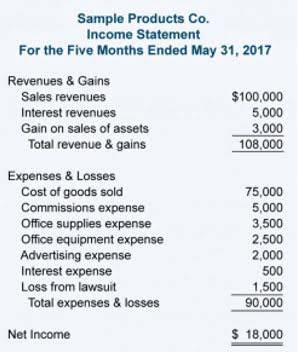
P-Card transactions, which allow employees to purchase goods and services on behalf of the company, introduce unique challenges in expense recognition. The core principle requires that expenses be recorded at the time they are incurred, irrespective of the actual cash payment timing. Expense recognition involves various methods, such as specific identification, weighted average, FIFO (First In, First Out), and LIFO (Last In, First Out). The choice among these methods affects financial statements and depends on their suitability to the business operations and adherence to GAAP.

Now, let’s wrap up our discussion on expense recognition in the next section. So, let’s dive into the world of expense recognition and unravel its importance in the realm of finance. Keep in mind that, as a small business owner, you may have some restrictions, https://www.bookstime.com/ such as those on the amount of interest that’s deductible for purchases of vehicles and vacant land. If you have a home office, deduct your interest on your home mortgage as an expense related to the business use made from your home.
What Is The Expense Recognition Principle?
You’ll need to understand a few critical concepts of expense recognition methods. Understanding the guidelines helps you avoid mistakes that can lead to inaccurate accounting. Some expenses clearly contribute to revenues but recognizing them is tough.

Later in the month, they will see the charge come through on their income statement from their bank. By recording the above journal entry, Sara has recorded the commission expense in the correct month, even though it won’t be paid until March. When it is paid, Sara needs to remember to reverse the accrual entry, or her commission expense will be overstated. Businesses are allowed to deduct certain expenses from taxes to help alleviate the tax burden and bulk up profits.
Offset Against Recognized Revenues
Expense recognition is a key component of the matching principle; one of the 10 accounting principles included in Generally Accepted Accounting Principles (GAAP). Small, periodic, or one-off costs for clothing required for your work, such as a uniform or protective clothing, can be considered for deductions. However, these miscellaneous clothing expenses can only be written off in certain instances and as dictated by your country’s regulations. A tax deduction, for example, could be made for work clothes required for safety reasons, such as PPE wear. However, a new wardrobe of nice dress clothes for an office job could not. Non-operating expenses are separate from operating expenses from an accounting perspective so as to be able to determine how much a company earns from its core activities.
Specific types of income and expenses warrant their dedicated ledgers, such as a sales ledger and utility ledger for incoming and outgoing expenditures. The IRS treats capital expenses differently than most other business expenses. While most costs of doing business can be expensed or written off against business income the year they are incurred, capital expenses must be capitalized or written off slowly over time.
The following are some of the types of records you should keep:
This is different from cash accounting, which recognizes revenues and expenses when money changes hands. Companies typically capitalize interest costs for assets that require an extended period to prepare for their intended use. This accounting practice allows interest costs to be either capitalized on the balance sheet or expensed on the income statement. For assets constructed for the company’s use, capitalized interest is included as part of the relevant long-lived asset on the balance sheet and is expensed over time through depreciation. Expense recognition is a fundamental aspect of financial reporting in accrual accounting. By accurately recording and matching expenses with the revenues they help generate, businesses can provide stakeholders with reliable and transparent financial information.
It’s important for businesses to carefully evaluate their expenses and apply the appropriate recognition criteria and principles to ensure accurate financial reporting. Accrual accounting is important because it allows businesses to match revenues with their corresponding expenses. In this way, businesses that use when are expenses recognized accrual accounting can see how they convert assets into expenses in their financials. This also makes it easier for companies to gauge the profitability of particular activities in specific periods. Immediate recognition is perhaps the easiest method of expense allocation, since it’s done on a regular basis.
Leave a Reply